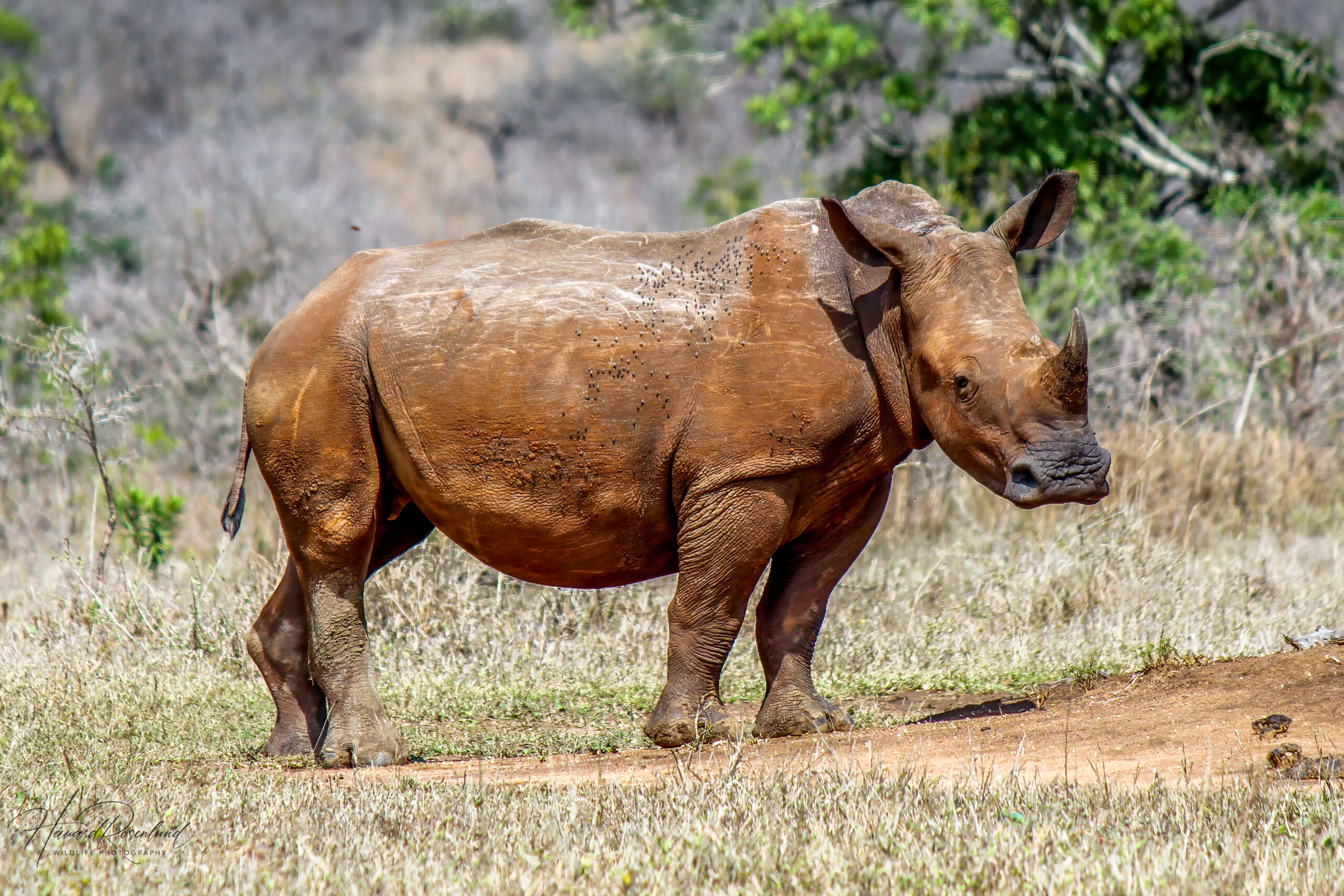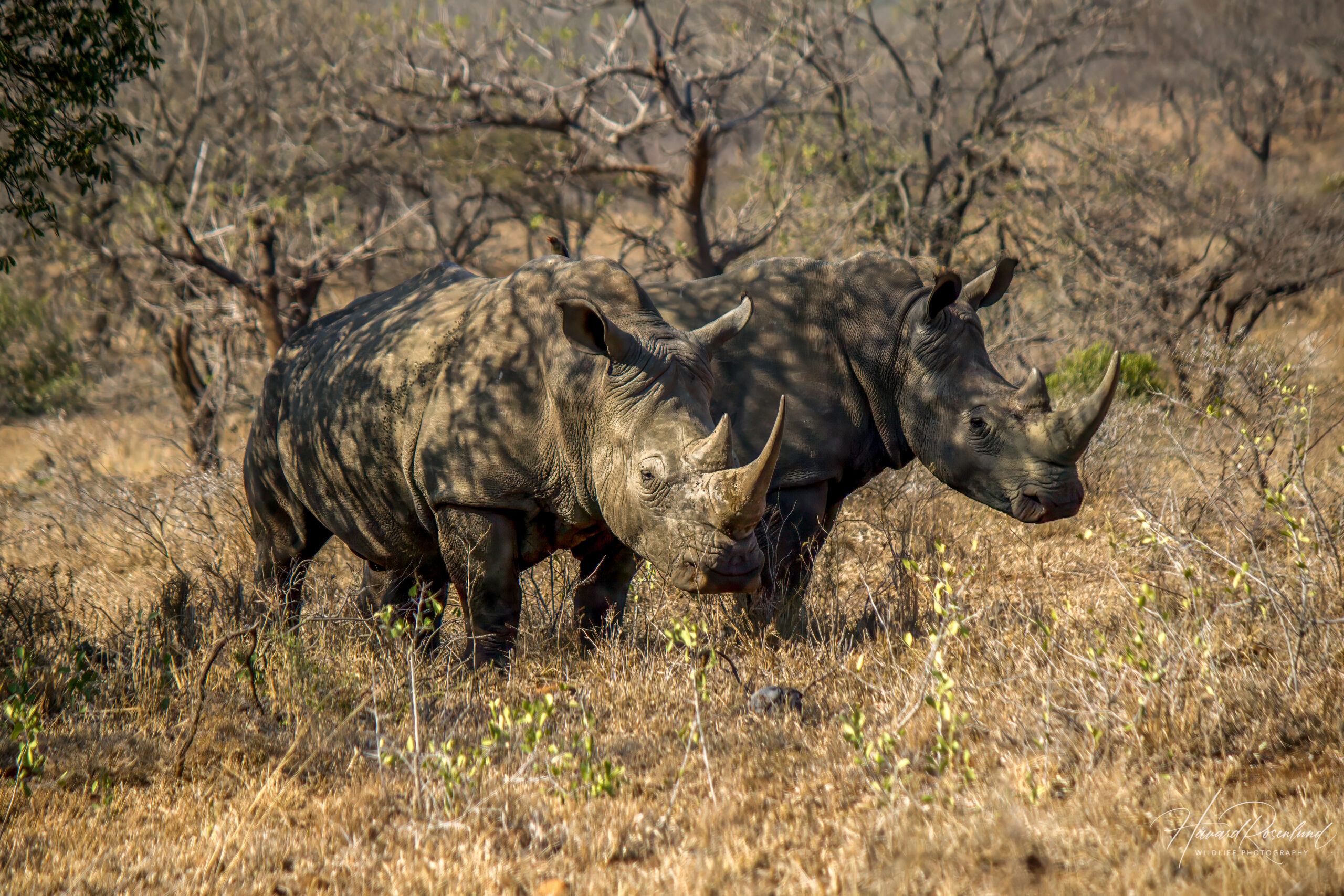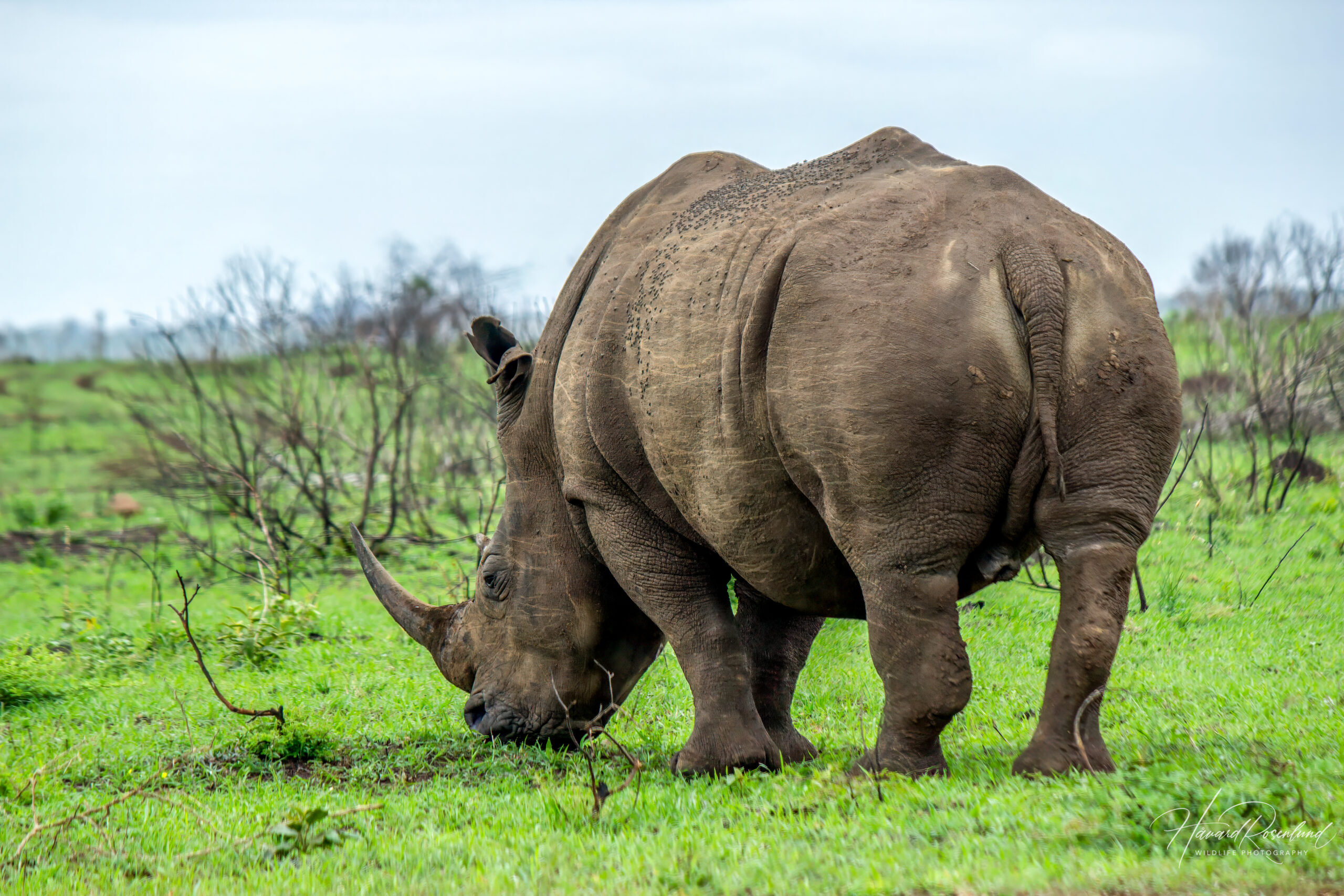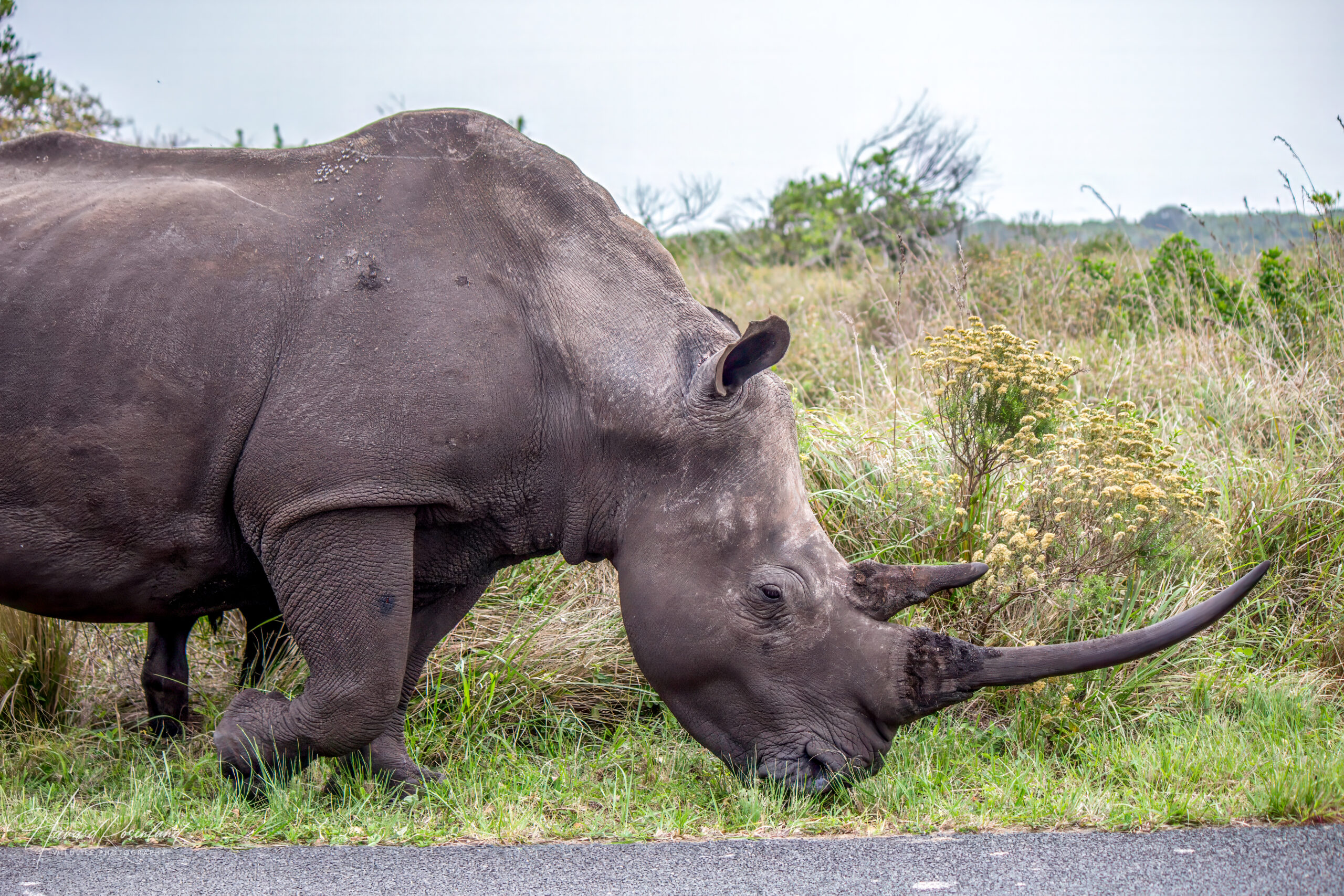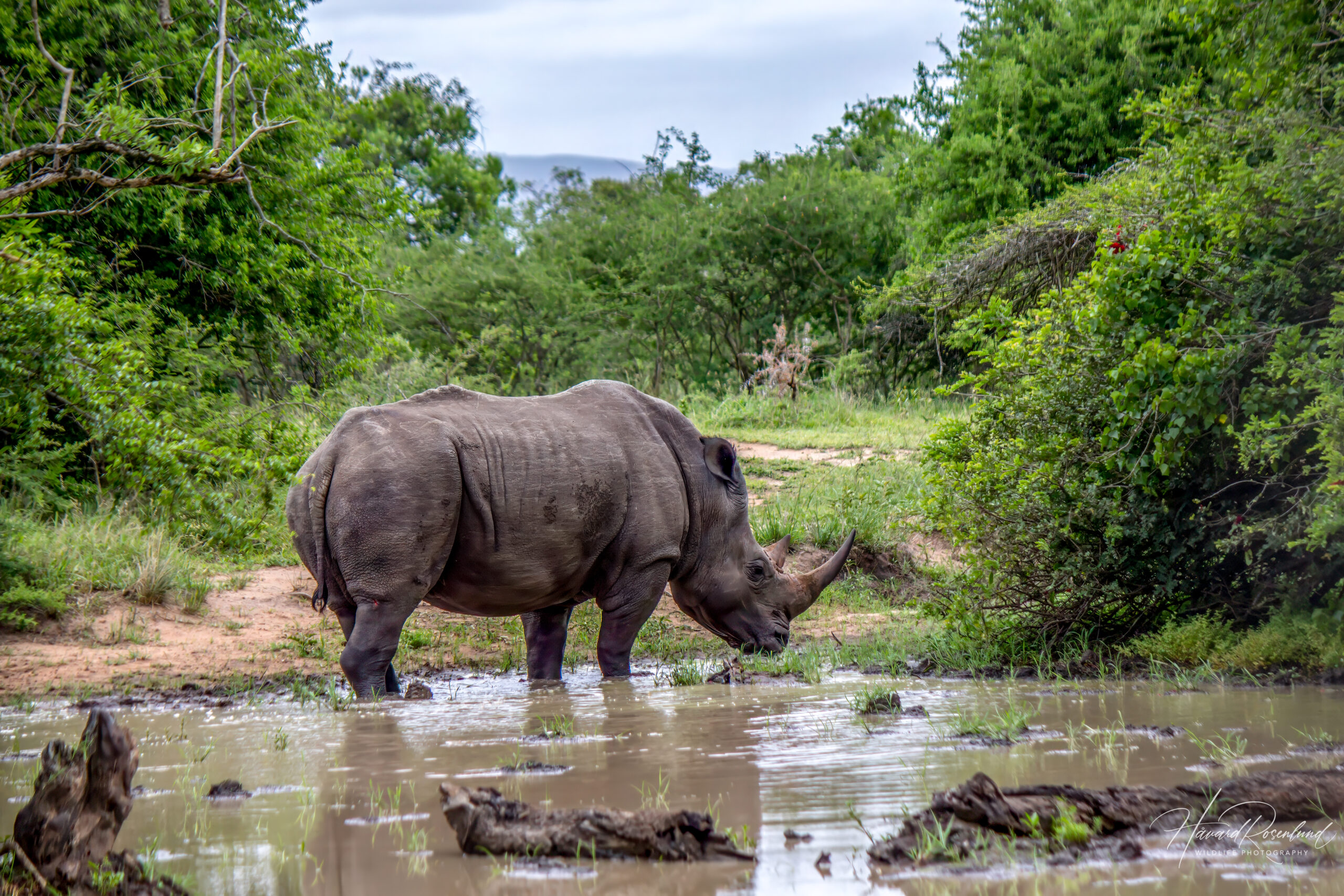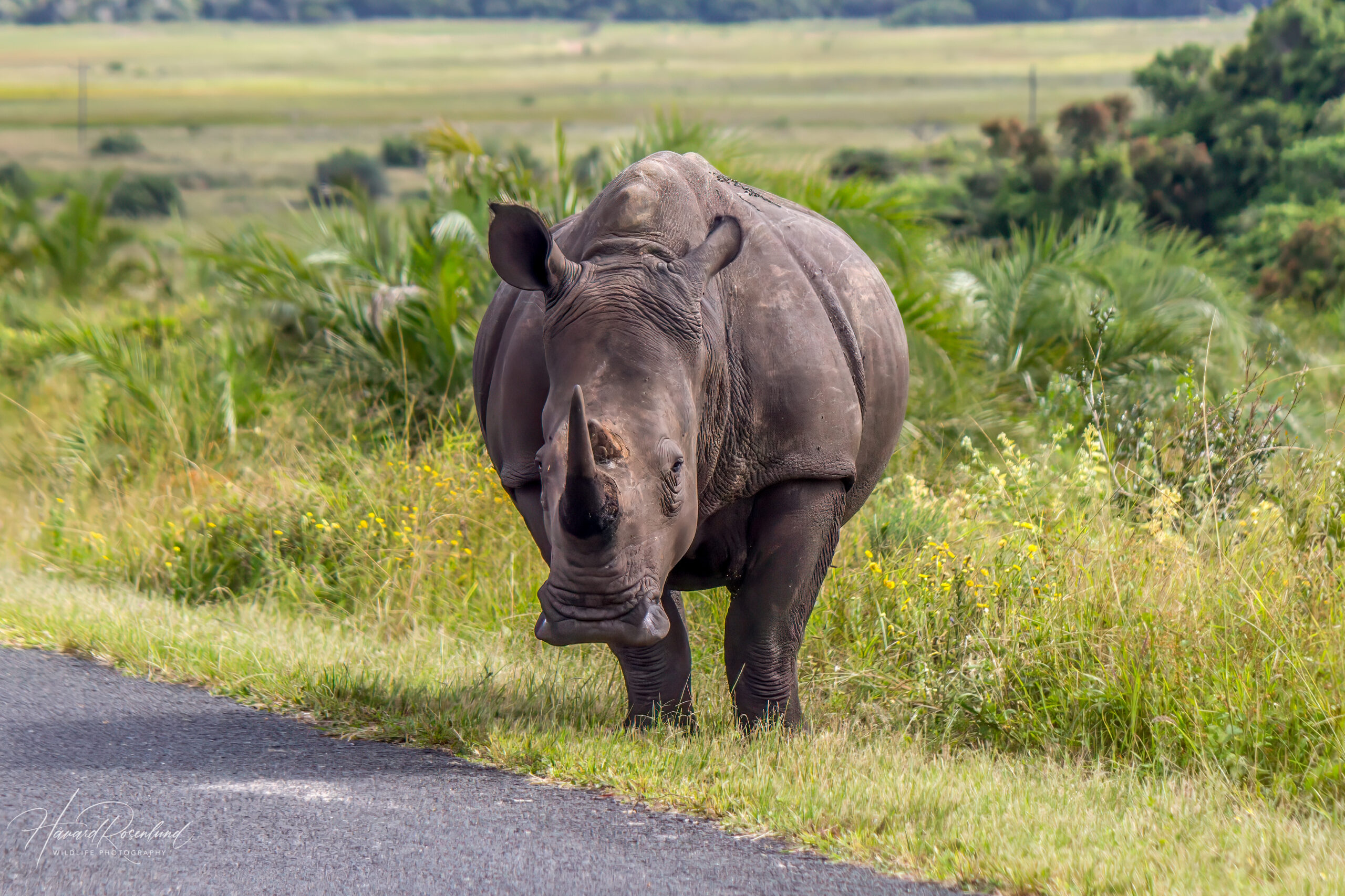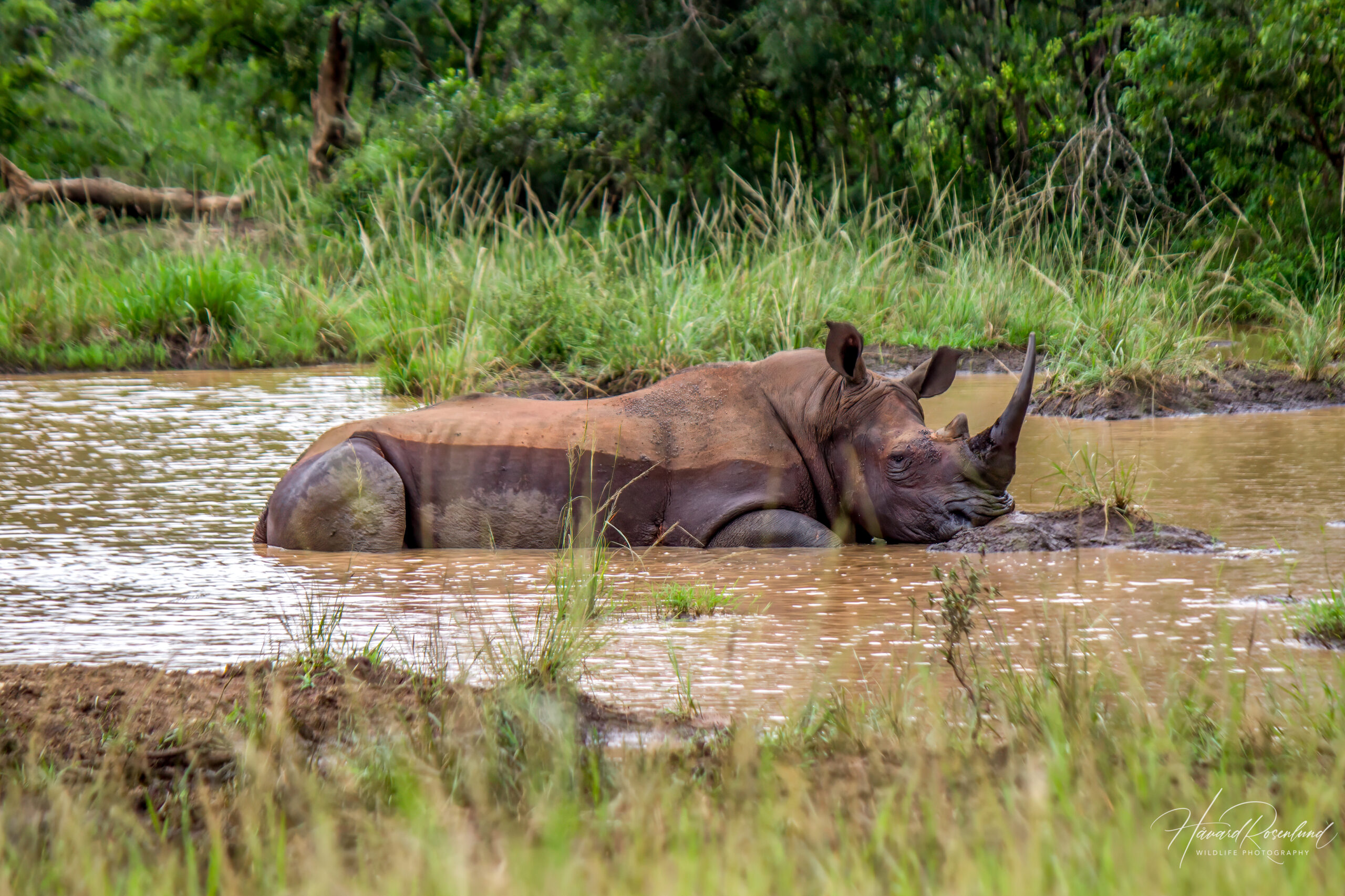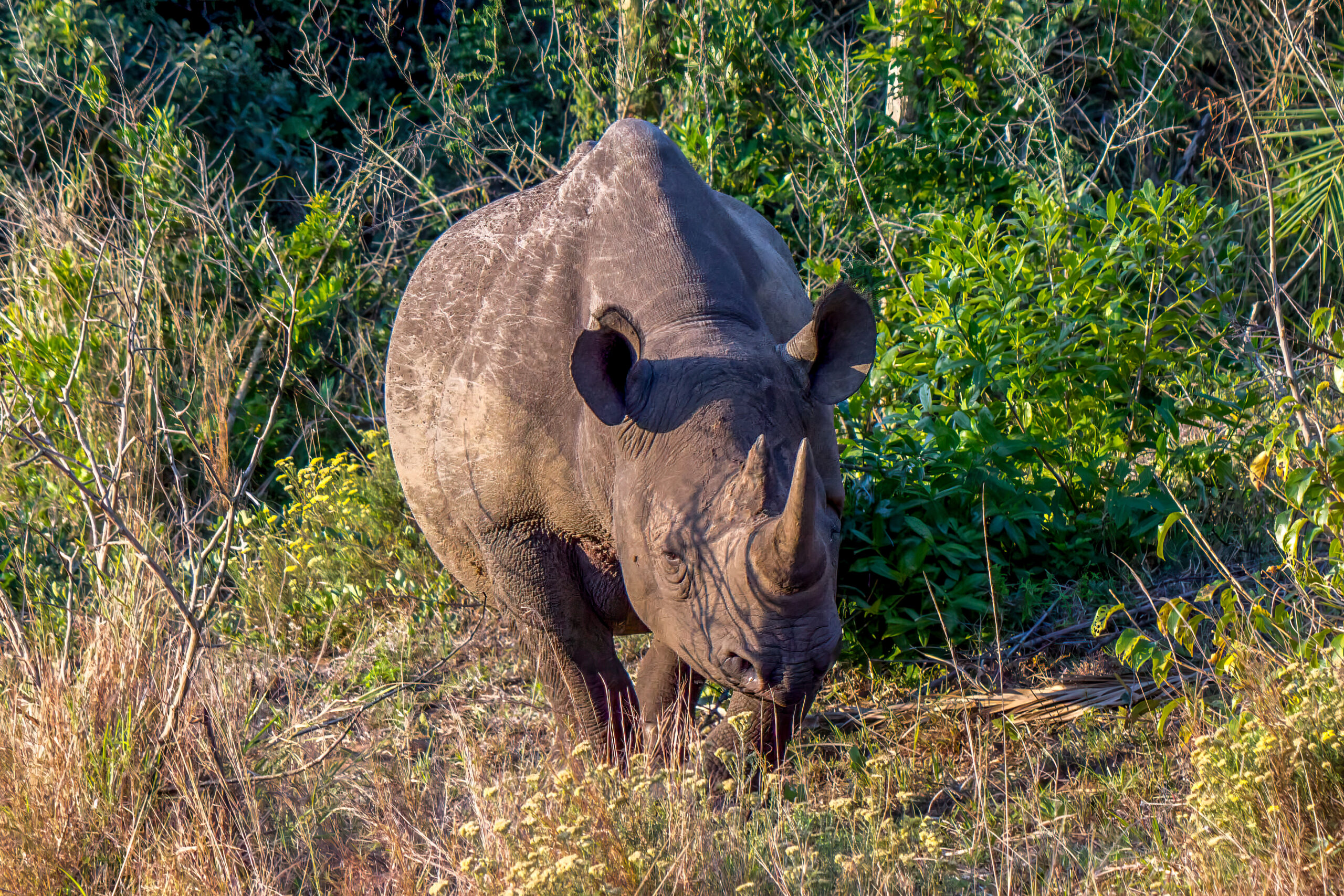Description
The white rhinoceros (Ceratotherium simum), also known as the square-lipped rhinoceros, is the largest species of rhinoceros. It is often considered the largest land mammal after the elephants. Adult males weigh up to 2,000-2,300 kg (4,400-5,100 lb) and females about 1,600 kg (3,500 lb). Shoulder height is on average 1.5-1.85 m (4 ft 11 in – 6 ft 1 in) for males, and 1.5-1.6 m (4 ft 11 in – 5 ft 3 in) for females. Both sexes have a pair of horns growing at the front of their head, with the front horn always the largest, in contrast to the black rhinoceros (Diceros bicornis), where the second horn can be just as long or sometimes even longer. The front horn averages a length of 60 cm (24 in), while lengths up to 150 cm (59 in) have been recorded. Only the horns of females can grow to such lengths, as the males use the horns for fighting and territorial marking, which continuously grinds the horn.
Despite its name, the white rhinoceros is not white, and the name comes from the British misinterpreting the Dutch word, “wijd”. The word “wijd” means wide and was used by the South African Dutch settlers to describe the wide mouth of the white rhinoceros. The British interpreted the word to mean “white” and the English name of the animal was born. The other name, square-lipped rhinoceros, is more describing and probably more correct, but seldom used.
Diet & habitat
The white rhinoceros is a grazer, and its wide mouth is perfectly designed to eat grass. It prefers open grasslands and savanna habitats with close proximity to water, though it can go without drinking for up to 4-5 days. Like all species of rhinoceros, it often wallows in mud to cool down and fend off parasites. Most of its day is spent feeding, though during the hottest hours it will often find a piece of shade and lay down to rest.
Social behavior
White rhinoceros is the only species of rhinoceros to live social lives, and a group of white rhinoceroses is called a crash. A crash of rhinoceroses normally consists of several females and their calves, and it is not uncommon to have 10 or more individuals in one crash. Subadult males will often follow a crash with family members until they are old enough to leave to fend for themselves. Adult male white rhinoceroses then live solitary lives. A dominant bull will mark his territory through the spreading of dung and urine at middens, as well as other spots to signify territory to other males. Middens are dung-deposit areas used by all individuals within a territory, and is even shared with black rhinoceroses, if present. The two species live peacefully together, but seldom interact. The dominant bull will also use his horn to scrape the ground and vegetation, as well as use his feet before eventually marking with urine. Subordinate bulls do not mark territories.
Reproduction
Females reach sexual maturity at around 6-7 years of age, whereas males does at ages 10-12. When breeding, a pair will stay together for 5-20 days, copulating several times a day. Gestation period for females is 16-18 months. The calf might suckle for over 12 months and will stay with the highly protective mother until she is ready to give birth again after 2-3 years, at which time she will chase her calf off. Here is a video of a female with a young calf:
Status
The white rhinoceros is split into two subspecies, the Northern white rhinoceros (C. simum cottoni) and the Southern white rhinoceros (C. s. simum). The Southern subspecies is the most common and numerous one, whereas the Northern subspecies is at the verge of extinction with only two females left in captivity. Plans to resurrect the subspecies through cloning is ongoing, and the Southern white rhino will be used as surrogate.
The Southern white rhinoceros is quite the success story. It was believed extinct at the beginning of the 20th century, before a population of less than 100 individuals were found. The area where they were found, on the East Coast of South Africa, was then turned into a protected area, and was the first ever protected nature reserve in Africa. This area is part of the iMfolozi-section of the now famous Hluhluwe-iMzolozi Park. In this area they did a massive comeback, and all Southern white rhinoceroses today come from this population. There are now more than 15,000 individuals, numbers are increasing, and the species is listed as near threatened on the IUCN Red List.
Poaching
The population trend of the white rhinoceros is still increasing, despite many years of heavy poaching which have threatened to put an end to the successful resurrection. The rhino horns from murdered rhinos most often end up in China or Vietnam, where they are used in traditional medicine. However, no effect of this “medicine” has ever been recorded. During the years 2013-2017 over 1,000 rhinos were killed by poachers in Africa each year, and several hundreds were killed in each of the years prior to satisfy this market. Since then, major actions have been taken, and poaching has been reduced to below 500 rhinos per year. This number is still quite high, and further actions need to be taken to reduce it further.








